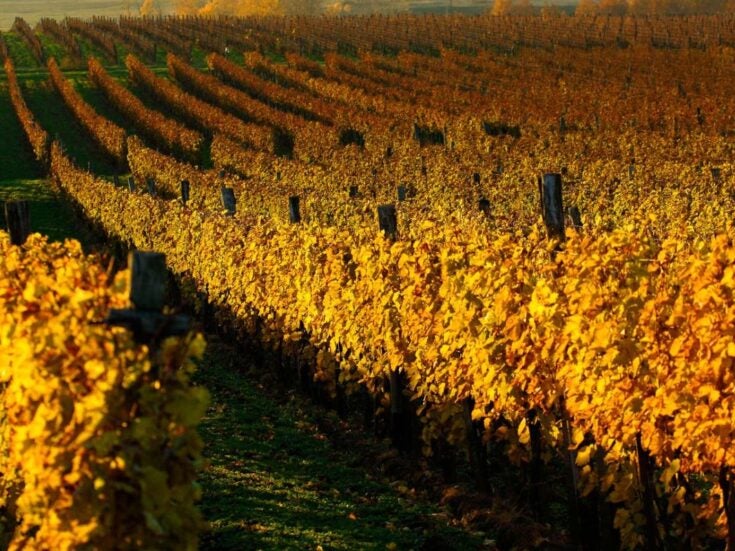
Clive Cummings took quite a chance when he decided to transform a 900-year-old Burgundy monastery into a luxury hotel, but his prayers have been answered, he tells Freddy Barker
AS MOST MULTI-MILLION-POUND hotel acquisitions take years, you have to query why Clive Cummings took just minutes to buy L’Abbaye de la Bussière — a 12th-century monastery nestled in sixteen acres of the Ouche Valley — for its potential as a HNW retreat.
His decision was all the more remarkable considering he did not have the funds to hand, did not know the Burgundian hotel market, did not know the conversion cost, did not know the survey result and did not speak French. What’s more, he didn’t even clear it with his wife Tanith, who at the time was living with their four children in a thatched house in Sussex. ‘It was all for the love of the building,’ says Cummings. ‘I thought, “This is a one-off, let’s go for it.”’
Wandering around L’Abbaye, I was inclined to agree with him. The grounds were intimate (if perhaps overlooked by the locals), the buildings had a peaceful ambience. Light flowed through their stained-glass windows and filled the labyrinth of rib-vaulted rooms perfectly. Walking through the front door was, for me, akin to entering a London church: the uncertainty of the street soon gave way to the tranquillity within.
That said, the monks who lived there for 900 years until 2005 were a fairly spartan bunch, and when Cummings bought the estate from the Archbishop of Dijon the communal rooms weren’t exactly five-star. So having put €2 million down, largely borrowed from his parents and the bank, he embarked on a monumental renovation.
Obstacles were everywhere. Inside, the walls were crumbling because the monks built shells around the ageing architecture rather than restoring the original. Outside, the lawns were heaving with shallow graves and the lake was a cesspit. Cummings — the kind of hands-on owner as likely to replace your light bulb as greet you in the restaurant — set about the refurbishment with gusto, employing upwards of 70 specialists. Inspired by the attention to detail that his parents had shown at their hotel, Amberley Castle, an 11th-century pile 90 minutes from London where they added an eighteen-hole putting course, he spent €6.5 million.

The main edifice, where the monks ate, was converted into the communal section of the hotel, with four drawing rooms filled with open fireplaces, yawning sofas and contemporary sculpture by Paul Day. Meanwhile, the bedroom block, an 18th-century exterior housing a 21st-century interior, was dressed up as a monastery, bursting with dark woods, velvet coverings and tassels galore.
Spending three days there in spring, I felt more at home in the public rooms than the private; they were more authentic. The walls were covered with murals from the days when the monastery was rented out as a hunting lodge to the Marquis de Segur, whereas the bedrooms, seemingly hollow shells carved out for commercial purposes, didn’t have cornicing or any other original architectural features.
For Cummings’ conversion efforts, though, L’Abbaye was accredited in Relais & Châteaux twelve months after it opened; it can’t have hurt that the guide’s managing director, Jean-Louis Bottigliero, used to court his wife in the grounds. Beyond that, the restaurant, then under the leadership of 26-year-old Olivier Elzer, who has since been poached by Pierre Gagnaire for the Mandarin Oriental in Hong Kong, was awarded a Michelin star.
The success was based less on the food, which to my mind was better on paper than plate, and more on the delivering the full-spectrum service of English country-house hotels to France. Too often across La Manche, they focus on restaurants and bedrooms alone, as traditionally all Parisians wanted when travelling south on the Route de Soleil was a good meal and a soft bed.
Regrettably, that is all too true of where the wealthy congregate in Burgundy. The choice has historically been between the Hostellerie de Levernois near Beaune, Maison Lameloise in Chagny or Le Relais Bernard Loiseau in Saulieu. They are all very good — they have seven Michelin stars between them, after all — but they are not designed for weekend escapes. For example, the last two are in the middle of town and no matter how delicious the food, no one wants to go to sleep to the roars of an A-road.
Occupancy levels at L’Abbaye are thus now 60 per cent, with a third each coming from Britain, France and elsewhere. Guests range from the frugal to the flashy. At the extreme end, you get the Ferrari drivers who hit 120mph on the B-road outside or the guests who ordered champagne from room service last year, only for the sommelier to enter the suite to find two mating on the bed while two others played chess by the window.

Such unholy behaviour on formerly consecrated ground nearly started the revolution when the hotel opened. The locals were in uproar at their former community centre being converted into a €470-a-night playboy palace. Under the banner ‘L’Association Sauver La Bussière’, 3,500 jacqueries shook the gates so vigorously that they caught the attention of TF1, France 2, France 3 and Catholic newspapers such as La Croix.
Their chief criticism was, in the words of one Mme Baligand, that the estate is ‘a jewel of French heritage’ and that ‘leaving it in the hands of the English is an outrage’. To them, the monastery was the focal point of La Bussière where the 160 villagers worked and worshipped. Fifteen rich Russians weren’t going to support the boulangerie or the pâtisserie — their euros would go to the Côte d’Or vineyards instead. Moreover, the new residents weren’t going to respect the abbey’s spiritual heritage. Centuries of purity and austerity would give way to an orgiastic frenzy of drunken foreigners. So for the locals, the English invasion seemed a lose-lose situation.
Yet apart from the odd hedonist, that hasn’t happened. The hotel now has a family feel to it, exemplified by Cummings’ children playing in the grounds with their Shetland ponies and St Bernards. Employment of locals has shot up from twelve to 34 and, as a sign of peace, the villagers flock to the abbey’s bistro for its €33 four-course lunches.
Despite the popularity, the hotel seems pleasantly untroubled by guests. This is the art of the country-house hotel: to be full yet appear empty. It is all part of the retreat’s unobtrusive nature. You won’t find any minibars, gyms or swimming pools here, which may alarm those who feel that marrying the back-to-basics approach of monasteries with the rich living of exclusive hotels is a clash of extremes.

However, Cummings defends L’Abbaye’s position confidently: ‘This hotel is not for everybody. If you want the mod cons, go to a Holiday Inn. But who needs a gym when you’ve got sixteen acres of parkland to walk around? Who needs cyberspace when you’re in one of the most peaceful places on earth?’
For many, the lack of distraction is the big attraction. One lady enquired upon arrival whether L’Abbaye had Sky Sports. Cummings said no, to which the guest beamed, ‘Great — that means my husband will have to talk to me now.’ The attitude perfectly illustrates the trap that many of us fall into — too often we treat our nearest and dearest as co-CEOs in the business of life. Sometimes it takes a holiday to rediscover the person one married. But beware: judging by the faces I saw on some of the couples walking the grounds, those distractions are there for a reason.
If a getaway calls, then just twenty minutes away, along manicured B-roads, lies the Route des Grands Crus, a 30-mile-long line-up of the world’s guiltiest pleasures, from Vosne’s Romanée-Conti to Gevrey Chambertin’s nine grands crus. There, the sweeping countryside is well kept, with field after field covered by vines milking every last inch of sun-baked terroir.
That’s why L’Abbaye de la Bussière fits in so well. Its focus on core offerings of good food and great wine provides an authentic base from which to explore the region. For Cummings, the owner, getting the business off its knees hasn’t been easy — six years on, it’s only just breaking even — but he’s got form. At Amberley Castle, his parents’ hotel, things got so bad in the Nineties that one weekend he was left in charge and was told that if any white vans came up the driveway they were bailiffs, and he was to drop the portcullis and refuse to let them in. ‘I was then told to unfurl a banner over the 60-foot walls saying, “Under siege for the second time in 900 years”,’ he recalls.
With any luck, that won’t happen at L’Abbaye. Despite the headaches of French bureaucracy and high tax (National Insurance for employers is 45 per cent), Cummings keeps investing in the hotel. This should ensure that the monastery remains a heavenly destination for years to come.

Freddy travelled to Burgundy on Eurostar and Avis. He stayed at L’Abbaye de la Bussière.






